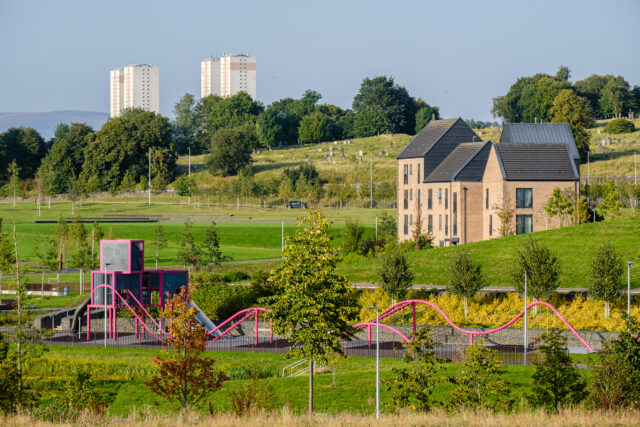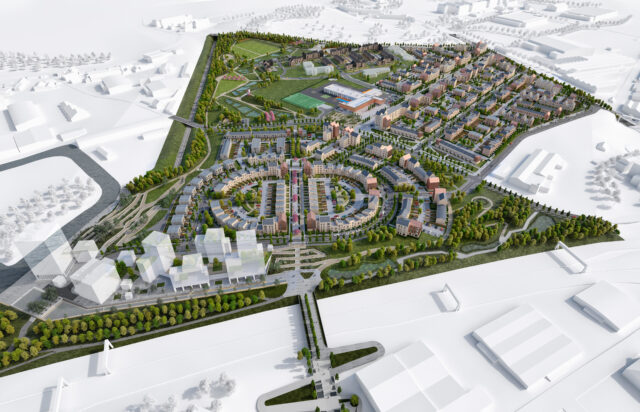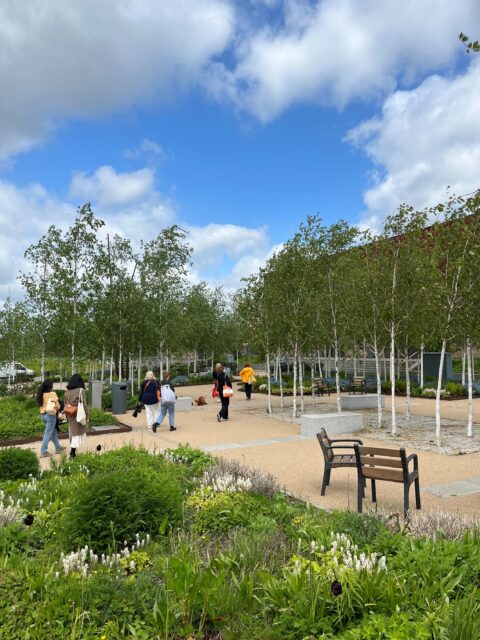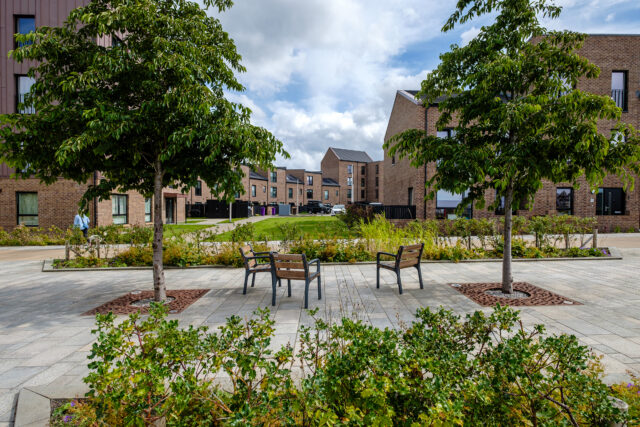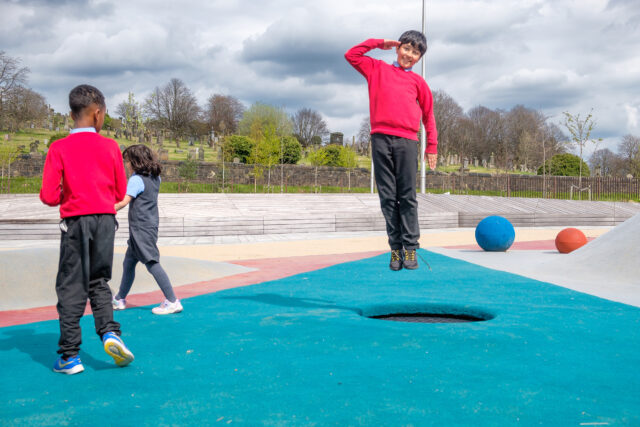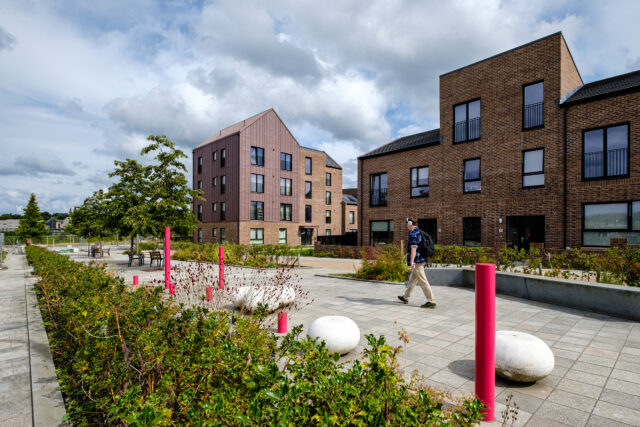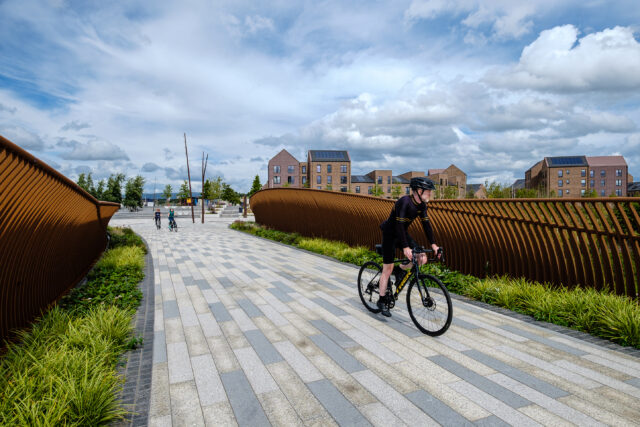Sighthill Transformational Regeneration Area
Category
Regeneration
Company
L D A Design
Client
Glasgow City Council, Keepmoat Homes, Glasgow Housing Association
Summary
Glasgow’s Sighthill neighbourhood has long had a strong community, overshadowed by deteriorating housing conditions and concerns regarding the safety of amenity space. The area was isolated by heavy infrastructure, including the M8 motorway, disconnecting it from the city centre. In the 1960s, its ten towers were home to 7,500 people and latterly Sighthill experienced the high levels of multiple deprivation typical of inner-city high-rise estates.
The last of these towers was demolished in 2016 and Glasgow City Council was determined that what came next gave residents a better deal. A new masterplan for the area was proposed as part of the city’s bid for the 2018 Youth Olympic Games. Although the Games bid was unsuccessful, the plan was brought forward as the Sighthill Transformational Regeneration Area, a Glasgow City Deal project.
The regeneration was split into two projects: advanced infrastructure and residential development plots. LDA Design was appointed to both, allowing a holistic approach to be taken. Taking forward Glasgow City Council’s original PPiP Masterplan, the landscape-led masterplan for Sighthill created a mix of 850 tenure-blind quality new homes, as well as new educational and community facilities.
Central to the vision was the development of advanced community infrastructure preceding the built development; ensuring that a mature, functional and attractive neighbourhood was available to residents from the outset. This included the community campus, incorporating a new joint-campus school and sports facilities, as well as extensive biodiverse parklands with integrated flood mitigation and sports and play opportunities wrapping around the site.
Forty-eight hectares of city centre land were brought back into safe public use through extensive post-industrial site remediation – 30 hectares being new green infrastructure. More than 4,000 trees of at least semi-mature size have been planted across the site in a wide range of species, guarding against potential catastrophic species failure.
The build programme has been carefully considered to provide a strong sense of place throughout with temporary uses providing early tangible benefits and helping to progressively build the community. Main and subcontractors were committed to providing community benefits throughout, including an on-site training facility for young people offering a career start in construction.
The regenerated neighbourhood is now just a ten-minute walk from Glasgow’s centre over a new car-free, accessible bridge across the motorway, encouraging active travel and plugging the area into the city and its opportunities.

